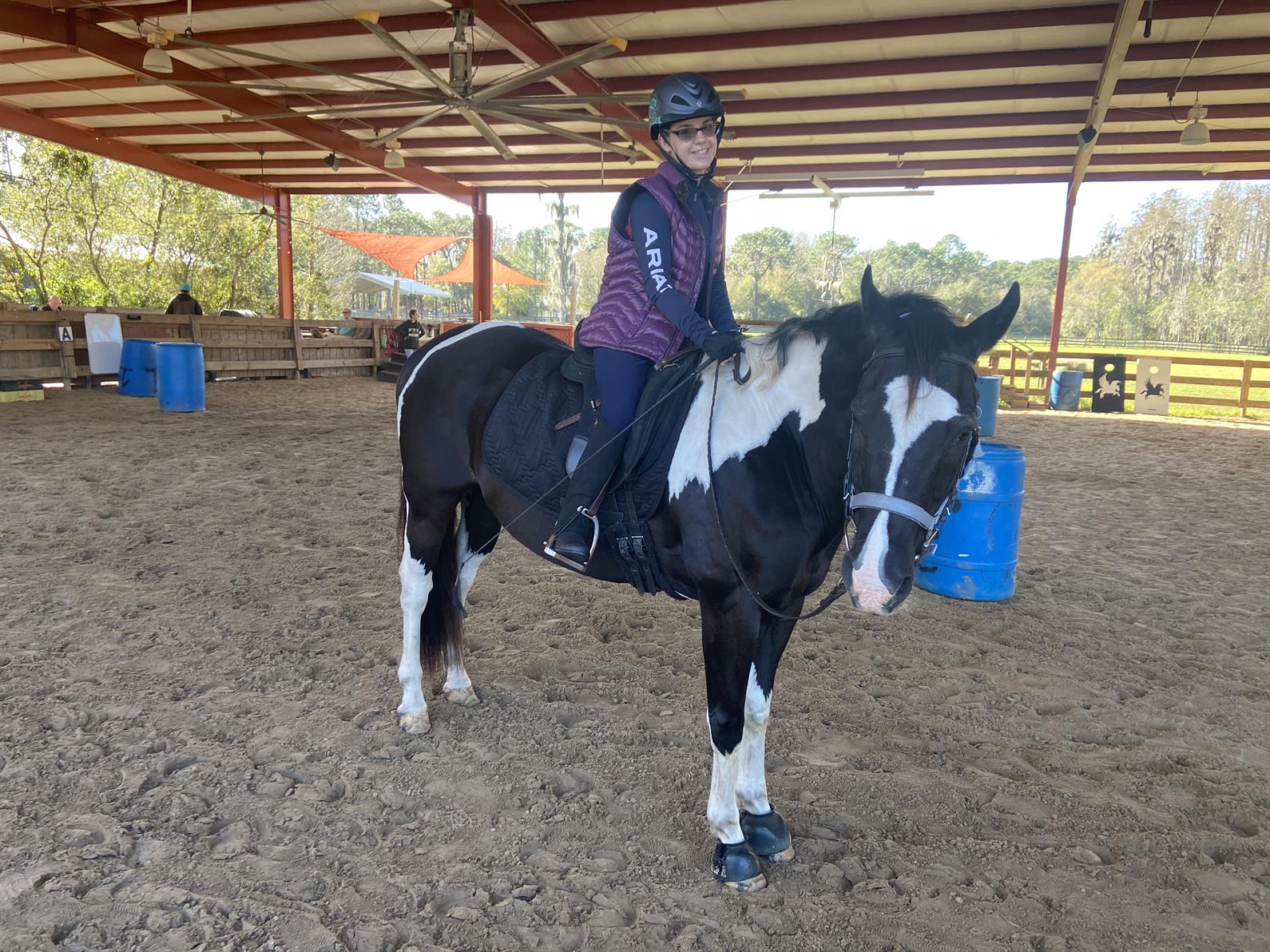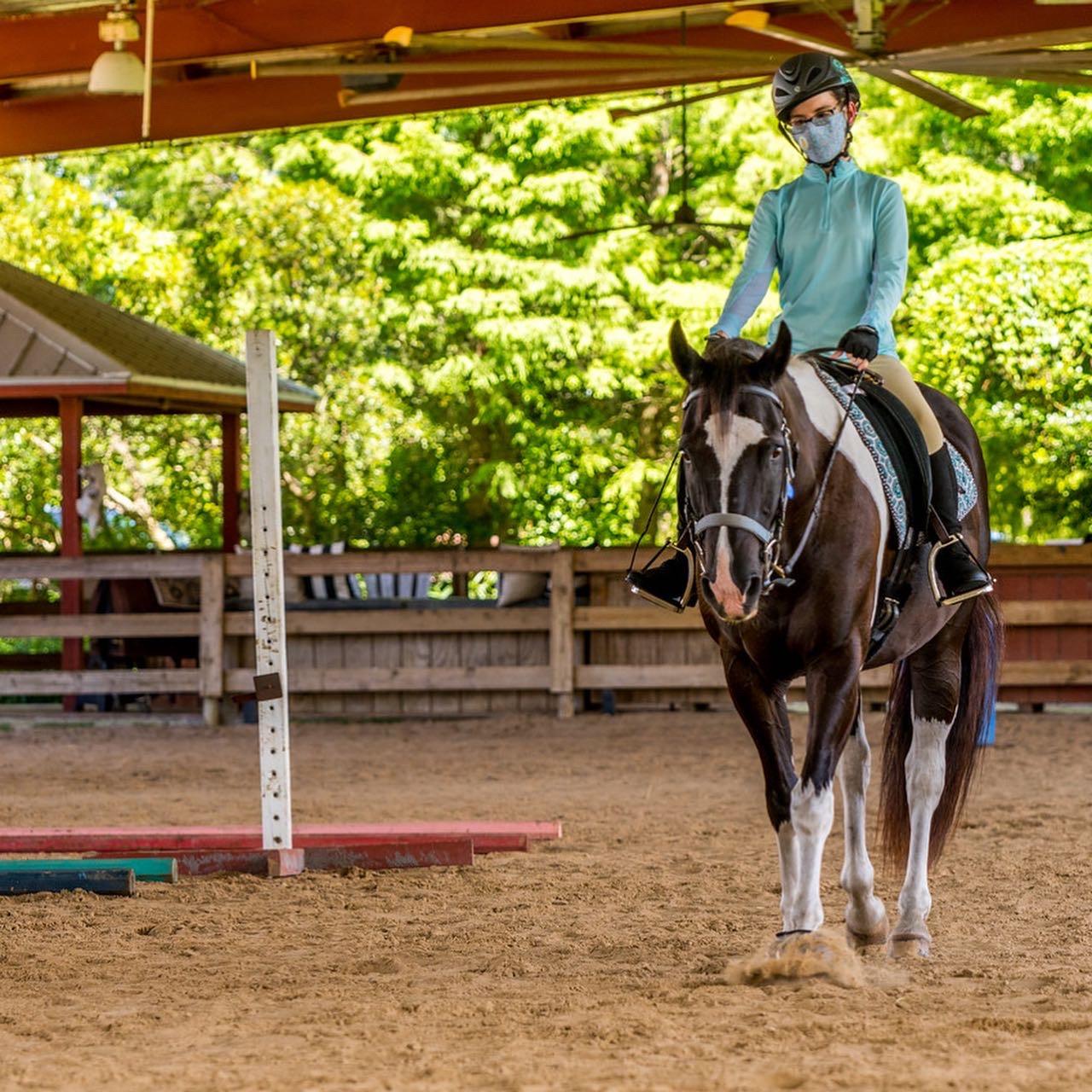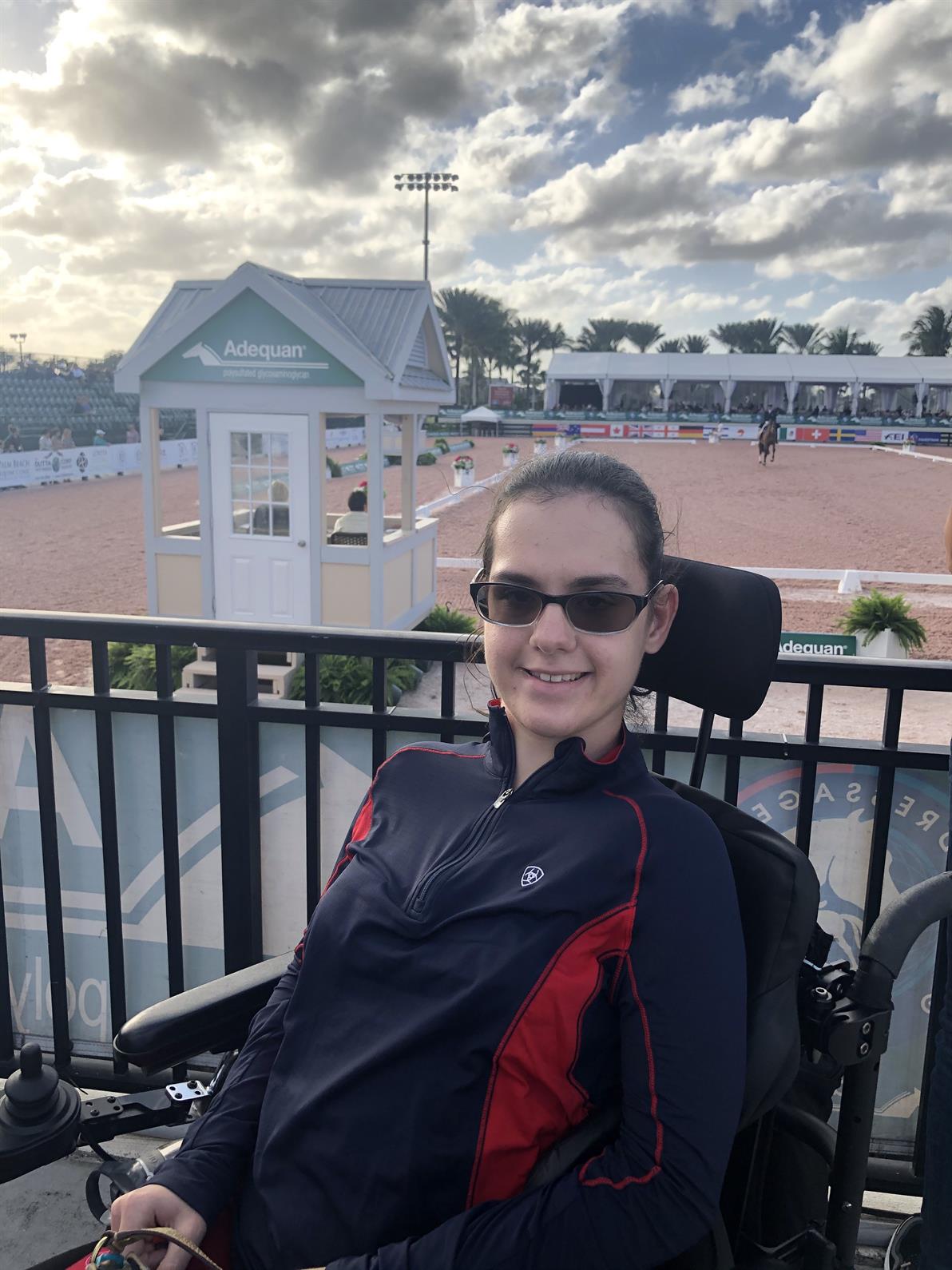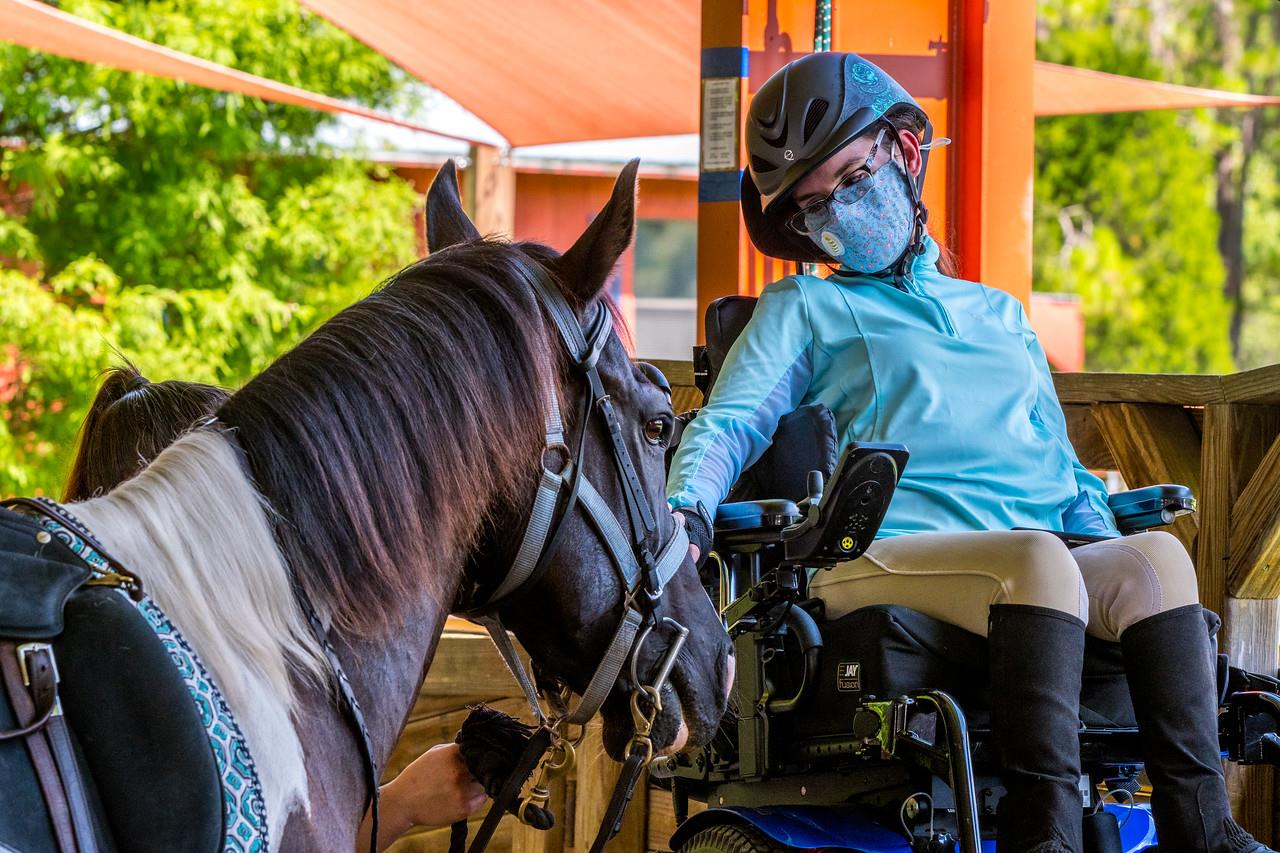Bryanna Tanase has had a passion for horses since early childhood. Now 22, she made her first contact with horses in a therapeutic riding program in 2016 and decided three years later to make the challenging transition to the sport of para-dressage. In early 2020, she received her National Classification as a Grade I rider, which is the first step toward competition. She currently is based at Quantum Leap Farm in Odessa, Fla. We caught up with her to find out how she got involved in horses, what the differences are between therapeutic riding and para-dressage, and what that transition is like.

Photo: Ashley Clayton
How did you discover the sport of para-dressage and what inspired you to want to try it?
When I was younger, I spent a lot of time on my computer, and I still do, as it’s how I continue learning about horses. One day my little self was curious to see if there were riders that had a disability out there, because until that point I hadn’t seen any. So I googled it and found videos of different international riders, like Rebecca Hart, Roxanne Trunnell, and other team riders. I watched the videos and thought, ‘Oh, yes, I need to do this!’ and I started reading more about it. That’s how my journey began: finding those videos and being amazed by them, realizing that it is something I could do, too. I’m so grateful to my parents for giving me the start I needed to pursue this dream of mine, without their help I wouldn’t have been able to accomplish any of my equestrian goals.
Now that you’re learning the sport of para-dressage, how is that different from therapeutic riding?
It’s different from therapeutic riding in that I have to focus a lot more on making my body stronger, too, in addition to learning more about dressage. Therapeutic riding is a way of introducing people to riding and adapting the basics of riding to someone’s disability, whereas trying to transition out of therapeutic riding and into para-dressage, you realize how much work you need to put in. It’s like stepping into a new world.
I’m currently in the process of trying to find a dressage trainer, in addition to having my therapeutic riding sessions, because I realized that I have a lot to learn about dressage itself. I know the basics, but there’s a lot I’m missing in terms of technical skill that you don’t get in a therapeutic riding session.

Photo: Mike Sexton
Therapeutic riding and para-dressage are completely different. One is recreational, and one teaches the horse and rider to be an athletic team. You learn how to communicate with the horse in therapeutic riding, but there’s a whole different level to it when you’re doing para-dressage. An example is attempting movements like leg-yielding, when you would normally use your leg to guide the horse through the movement. Since I do not have enough strength in my legs, my instructor and I had to come up with a different way I could perform it.
It becomes a difficult balance, too, because not only do you need to learn the movements that are needed, but you also have to do them in a way that fits your unique abilities and make sure they look good.
Why was it important for you to get a National Classification?
The National Classification is what enables you to compete in nationally recognized USEF shows in para classes. The process is that you have to fill out an application and explain your disability, giving the classifiers and USEF general information about the disability you have. Then they set up a date with you to receive your classification.
My classification was done at the Adequan® Global Dressage Festival in Wellington, Fla. I live in Tarpon Springs, which is four hours away from
Wellington. I was nervous and excited at the same time. I knew about Wellington, but I’d never been there before, so it was a really big deal to me. I remember feeling super-overwhelmed the minute we stepped on site, because there was so much going on! It was my first time going to a horse show as well, and there were so many amazing things to see. I watched riders from Japan and Germany and was captivated by the way they carried themselves across the arena. The opportunity to go to Wellington filled me with new resolve to go after my dreams. When my mom and I arrived, we signed in at the show office, and then we went to the classification tent where we were greeted by the classifier.
The evaluation is physical, so there is no riding involved. The classifiers ask you questions about your disability and mobility in general while having you do many different exercises to test grip strength, balance, etc. Your performance on the exercises in scored from 1-10, and the classifiers tally up the scores to determine what Profile you will be placed into, which then determines your Grade. The Profile and Grade then determine what compensating aids you will be allowed to use in competition.

Photo: Gabriela Tanase
What is your Grade and what does it mean?
I’m Grade I, which means that when I compete it will be at a walk only. Grade I is meant for the most severely disabled riders. I was born with cerebral palsy, which is caused by brain damage and affects balance, coordination, and movement. I use a wheelchair for mobility; I can’t walk or stand on my own. Horses have increased a lot of my balance, and I’ve gotten a lot stronger physically, emotionally, and socially because of them. They’ve become my legs and given me a new perspective on life. They are my greatest joy.
Getting a National Classification was important to me because it was a way of committing myself to my goal of becoming a para-dressage rider. It would also give me access to more information and the possibility of having more connection to the sport that could set me up for the eventual goal of competing.
You’ve clearly gained a lot from your work with horses. Now that you’re starting your transition into sport, what do you think you’re getting from sport training?
It’s made me want to reach higher and given me a lot of determination. It’s making me put my foot forward and try to figure things out. I’ve had to be creative and try to figure out how to work around certain roadblocks, and use my brain in new ways.
When I’m in my therapeutic sessions, I’m thinking about my time with my horse and focusing on whatever my instructor and I decide to do that lesson. We practice as much dressage as we can.
There’s a lot that goes into sport that you don’t necessarily think about when you first start out: the expenses, investments in adaptive equipment such as saddles, physical training for horse and rider, the characteristics that make a great para-dressage horse, and so on. I’m used to riding in a regular saddle and making the best of what I have available. I’m learning that to reach the top I’m going to have to make many sacrifices.
My position in the saddle was also something I never gave much thought to. I constantly have to remind myself to engage my core, keep my hands down, and keep my feet in a firm yet relaxed position. All I had to think about before was, ‘Make sure you don’t run the horse into anything!’ But now I consciously have the mindset of making sure my posture is right and that things look like they’re supposed to.
My view is a lot more serious, even though I’m still just at the beginning stages. I’ve started to adopt that dressage mindset!
I remember the first time I nailed a square halt, I was like, ‘Oh my God, I did it!’ For so long I’d watched so many people doing it. And I wanted to figure it out. And then someone told me ‘Just keep your horse’s hind legs moving until the halt.’ So I tried it and he did it! Just that small thing was so amazing to achieve.
My instructor tapes my rides a lot, and I’m always watching to see what I can build on and what I could have done better. Even when I first started riding, para-dressage was always in the back of my mind, even though I wasn’t really thinking seriously about it. I wanted to give myself time to get used to being with the horses and learning a lot of the general aspects of riding. I’d never really had a big or consistent experience with horses. Being in a therapeutic riding program was my first experience with riding that wasn’t just small pony rides. I wanted to give myself some time to adjust to all of that before I decided to make the leap to para-dressage. Last year was the year I really began to go after my dreams.
What are your short-term goals in para-dressage?
My short-term goals are to find a dressage trainer I can train with to supplement my therapeutic rides. The combination of both therapeutic and dressage rides will be very effective, as they will serve different purposes. The dressage rides will allow me to gain the technical skills I need and learn new movements in a step-wise fashion, while my therapeutic rides will be for revision and continued strengthening and refinement. I’m also in the process of finding a lease horse that I will be able to enter my first competitions on.
What are your long-term goals?
My dream would be to go to the Paralympics and to be on the U.S. Para-Dressage Team. If I were able to be nationally recognized, I’d like to use any status I might have to help people like me to get into the sport and allow my knowledge to help other people with disabilities to ride.

Photo: Mike Sexton
What would you like other equestrians to know about the sport of para-dressage?
I’d like them to know that all of us involved in it are working very hard to make our goals happen. We might have disabilities, but we’re doing our best to use our disabilities to our advantage. We’re not defined by our disabilities, and we know our limits. We are serious athletes, and we want to show others what we can do. Some people might be scared about us being on horses, but we know what we signed up for! We’re just as passionate as everyone else in the sport. We might have a lot of extra challenges in the way, but we’re not letting them stop us from doing it, even if it takes us a lot longer than the average person to get where we want to go. We’re letting our passion for the sport lead the way.
What have you gotten from your relationship with horses?
They’ve given me more than I could ever put into words. The horses have given me something to look forward to in my life, and they’re always there if I feel sad or lonely. I absolutely love every minute with horses, whether I’m riding, grooming, helping with chores, or just enjoying their company. They’ve really helped me with my confidence, as well. Being a person with a disability, you’re often really hard on yourself about things that you see other people do, and you forget to focus on the things that you can do, instead of the things that you can’t do. Horses remind me of my capabilities. If I hadn’t gotten into horses, I probably wouldn’t do a lot of the things I do now, and I feel more comfortable with people now, too, because horses give me something to talk about and be excited about. I’m super passionate about horses and sport and my love for them makes my life feel complete.


